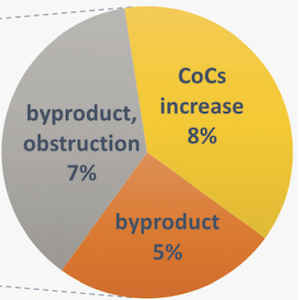Opportunities and critical issues related to the use of amendments as sustainable remediation techniques

All claims expressed in this article are solely those of the authors and do not necessarily represent those of their affiliated organizations, or those of the publisher, the editors and the reviewers. Any product that may be evaluated in this article or claim that may be made by its manufacturer is not guaranteed or endorsed by the publisher.
Authors
This study aims to analyse the opportunities and critical issues related to the use of amendments as remediation techniques. The performance of amendments (Aerobic Bioremediation, In Situ Chemical Oxidation and Surfactants) was compared with the performance of other groundwater remediation technologies (Air Sparging, Pump&Treat, Multi-Phase Extraction, Pump&Reinjection, Monitoring Natural Attenuation) based on a dataset of 180 contaminated sites. The considered factors are: effectiveness of the remediation; cost to remediate; operational time; environmental sustainability. The occurrence and types of amendment-related issues analyzed were studied on the 40 sites where the amendments had been applied. Issues occurred in 20% of the 40 analyzed cases and consisted of: a) partial or total occlusion of the monitoring wells and by-product formation, for example heavy metals (5%); b) uncontrolled increase in contaminant concentrations and potential downstream migration (8%); c) byproduct formation without well obstruction (7%). For each critical event, a detailed analysis was conducted to understand the processes (pH-Eh equilibria, contaminant desorption, hydraulic conductivity reduction), to highlight the design and procedural gaps (surplus of amendment, injection method selection, contaminant removal by purge). However, it has been observed that the issues can be avoided or mitigated with an accurate design, pilot tests performance, with the application of delivery and monitoring protocols, and at least with a prompt response adopting a corrective action plan, if necessary. The use of amendments turns out to be an effective solution: in 64% of the analyzed sites, it led to a significative reduction of the contamination within one year from the application. The cost is about one third if compared to the average of the other technologies. The operational time is about half the average operational time of the other technologies. Based on the results of sustainability analysis, amendments technologies reduce the production of waste, energy and water consumption, and they minimize air emissions. Considering the sustainability in its broadest sense (environmental, economic, and temporal), it is possible to state that the remediation by amendments is the most sustainable and would meet the interest of all the stakeholders.
How to Cite

This work is licensed under a Creative Commons Attribution-NonCommercial 4.0 International License.
PAGEPress has chosen to apply the Creative Commons Attribution NonCommercial 4.0 International License (CC BY-NC 4.0) to all manuscripts to be published.














